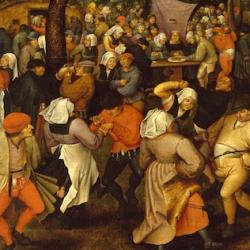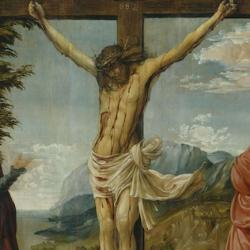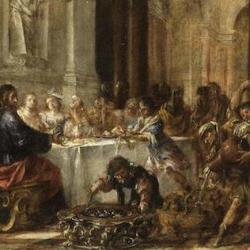The John-Revelation project being developed by Knox Seminary professors Warren Gage and Fowler White (available on the Knox Seminary web site) offers many insights on Revelation. It is just as helpful on John’s gospel. In Study Paper #3, they chart the parallels between the gospel and Revelation. Here are some thoughts stimulated by their work:
1) The word “zeal” appears only in John 2:17 and Rev 3:19. In both cases, the import is zeal for the cleansing of God’s house – the temple in Jerusalem in one case and the church in the other. (In another study, which shows that John and Revelation form a single chiasm, the cleansing of the temple of merchandizers in John 2 is matched by the description of the merchandizing in “Babylon” in Revelation 17-18. When we factor in Jim Jordan’s insight that economic imagery in Revelation refers to worship, we gain considerable insight into John 2. John appears to be using the same “merchandizing” imagery in his gospel as he does in Revelation; Jesus’ objection is not to economic activity in the temple, but to liturgical corruptions.)
2) There is a parallel between the story of the Samaritan woman and the scene of worship in Revelation 4. The word “honor” is the key verbal connection. Again, however, Revelation helps to interpret the gospel. In John 4, Jesus answers the woman’s question about the place of worship by saying that worship will take place in Spirit and truth; in Revelation 4 John is “in the Spirit” and enters into the true worship of heaven.
3) At several points, there are parallels between John’s description of the Jewish leaders in the gospel and the attacks of Satan upon the church in Revelation. Lazarus is parallel to the two witnesses of Revelation 11, and in both cases there is an assault on the witness (John 11:48; Rev 11:9-10). The plot to remove Lazarus in particular is linked to the fall of Satan from heaven; the Jewish leaders worry that their “place” is going to be taken, and in Revelation 12 Satan falls from his place. (Again, the chiastic structure provides additional illumination, linking the story of the woman taken in adultery in John 8 with the dragon’s war against the woman in Revelation 12. Fittingly, Jesus goes on in John 8 to accuse the Jewish leaders of being of their father the devil.)
4) Gage and Fowler link the vine image of John 15 with the grape harvest of Revelation 14, claiming that the latter passage describes judgment “upon the wild grapes, the apostate Israel.” Here I think they are mistaken, and the typology works against them. The only branches that bear fruit in John 15 are those that abide in the vine. If this imagery guides our understanding of Revelation 14, then Revelation is talking about a harvest of the faithful rather than the apostate. Thus, the parallels of John and Revelation support Jim Jordan’s interpretation of the Revelation 14 grape harvest, namely, that the grapes are the faithful who are persecuted and slaughtered, who are “harvested” into heaven by the Son of Man but whose blood is sprinkled out on the city, arousing the avenger of blood who destroys the city.
5) There are a couple of places where Judas Iscariot is likened to a beast. Judas controls the buying and selling for the disciples (John 13:29), and the beast controls the buying and selling through his mark (Revelation 13:17). Further, Judas is a son of perdition (John 17:12), and that word is used elsewhere in John’s work only at Revelation 17:8, 11, to describe the beast going to perdition. This helps to identify the beast, who represents treacherous disciples rather than, in the first instance, the empire.
6) In John 19:13, Pilate sat upon his throne of judgment to pass judgment, and this matches the great white throne judgment in Revelation 20:11-13. This takes on additional significance when we recognize the pun in John 19:13: The verb could mean either “Pilate sat” or “Pilate caused [Jesus] to sit.” The ambiguity raises the question, who is really in charge of this trial. And Revelation 20 provides the answer: even in the Praetorium, Pilate is on trial before a greater Judge.















